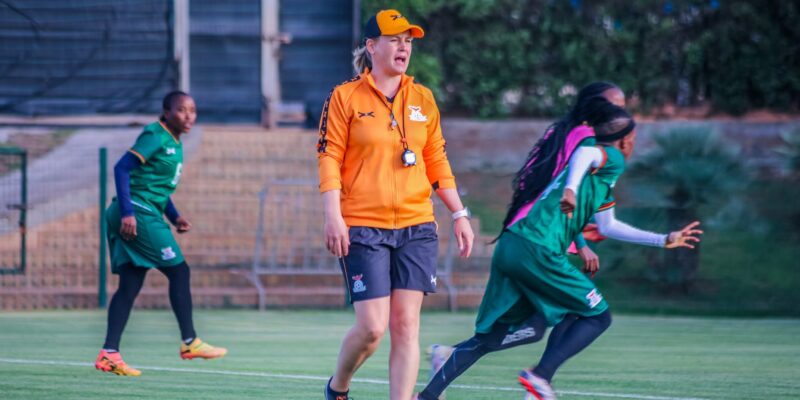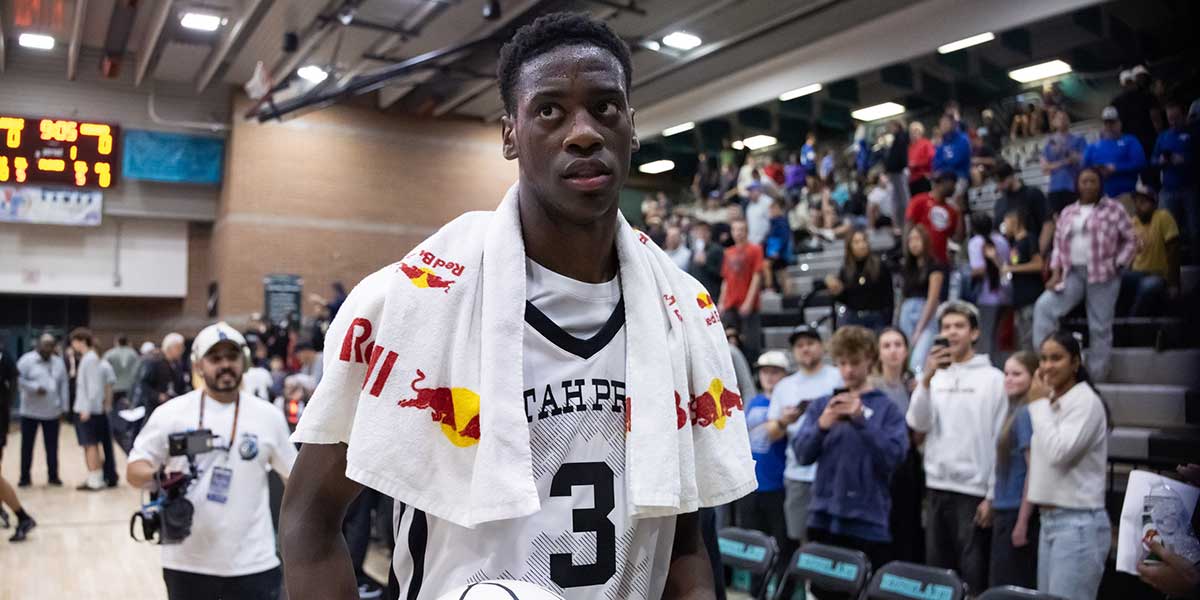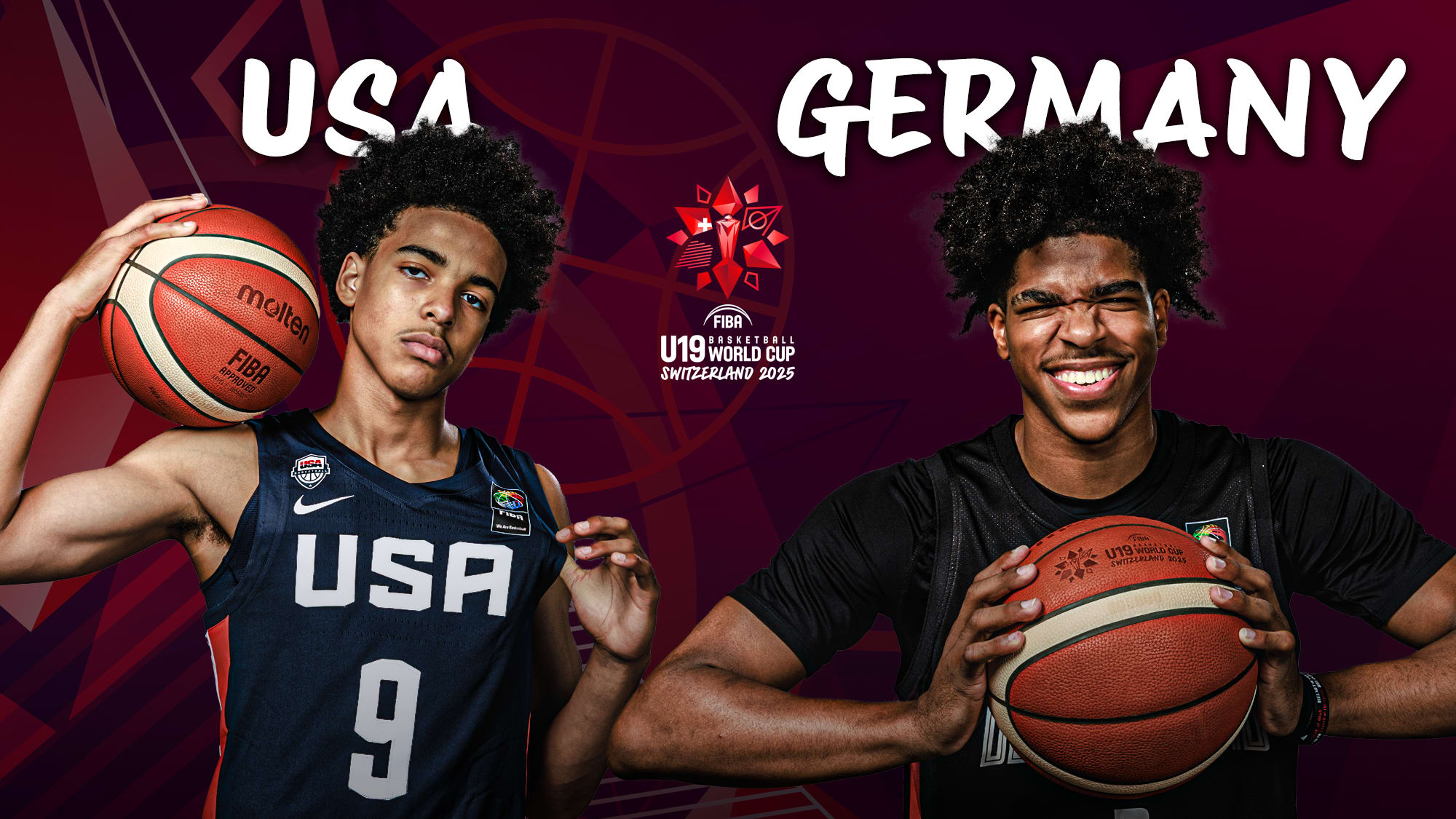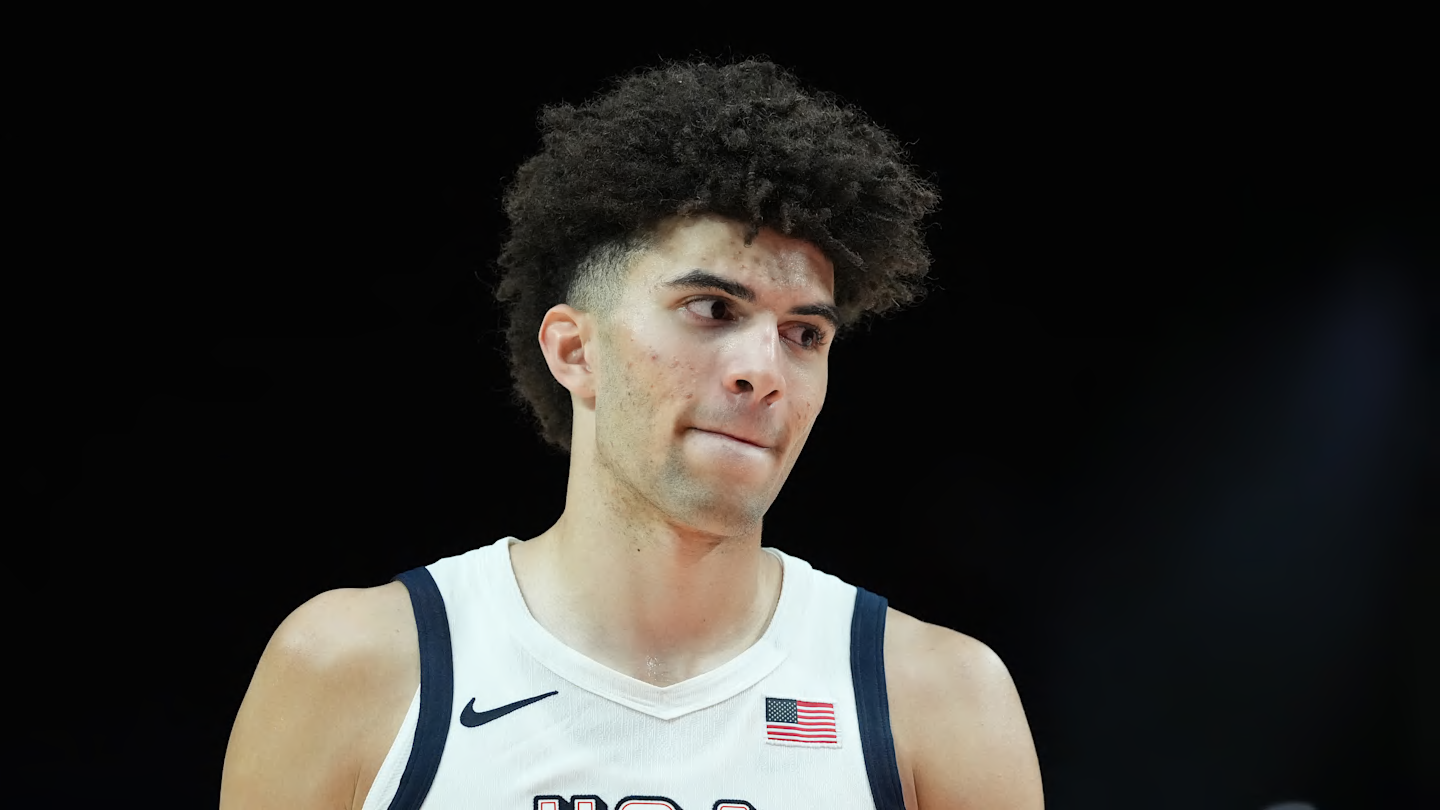The Athletic: AJ Dybantsa, leads U.S. to gold: Takeaways

AJ Dybantsa won MVP at the FIBA U19 World Cup.
* * *
Team USA entered the FIBA U19 World Cup in Switzerland as the gold medal favorite, and the Americans lived up to the hype, capturing the title led by incoming BYU star freshman AJ Dybantsa with a dominant 109-76 victory over previously unbeaten Germany in Sunday’s championship game.
Dybantsa capped off an impressive tournament run by achieving his goal — bringing home the gold with Team USA and taking home MVP honors with averages of 14.3 points, 4.1 rebounds, 2.3 assists and 1.1 steals per game.
Both teams were 6-0 heading into the final, but the Americans’ depth and firepower proved too much for a German squad led by Texas Tech standout and All-Big 12 freshman Christian Anderson Jr.
Throughout the tournament, Dybantsa showed why he is such a highly touted prospect and presumed by many to be the No. 1 pick in next year’s draft.
Dybantsa can impact both ends of the floor at a high level and has the potential to be a two-way star at the next level. He didn’t shoot well from 3 in this tournament (11.1 percent), but he should benefit by playing in BYU’s offense, a system that will give him wide-open opportunities.
What Dybantsa can do with the ball in his hands is reminiscent of NBA veteran Paul George. Dybantsa is similar; he is a big-shot creator with an excellent feel for the game, who can get downhill to either score or make plays for others. He also has a great motor; you don’t typically see kids ranked this high play this hard so consistently. He had a steal in every game but one (France), but his length and activity were always a problem for opposing teams. — Tobias Bass, staff editor
Dybantsa is one of the favorites to go No. 1 in the 2026 NBA Draft, and for good reason. However, the 2026 class isn’t as clear-cut as Cooper Flagg’s 2025 class. This class has four prospects capable of going first, including Dybantsa, Darryn Peterson (Kansas), Cameron Boozer (Duke) and Mikel Brown Jr. (Louisville).
Several prospects boosted their draft stock during the World Cup, including Brown and Anderson.
Brown, in particular, made a major statement — firmly inserting himself into the conversation as a potential No. 1 overall pick. He led Team USA in scoring (14.9 points) and assists (6.1) on 46/47/82 shooting splits. He also led the team in efficiency and made 3s (20). His combination of skill and feel as a lead guard will have plenty of NBA teams lined up wanting him to run the show.
As for Anderson, he will be in the running for Big 12 Player of the Year and first-team All-Big 12, alongside teammate JT Toppin, as the Red Raiders look to make another deep tournament run.
Anderson averaged 17.3 points (10th in the tournament), 4.9 rebounds and 6.6 assists (second in the tournament), including two games in which he scored 27 and 29 points. He was arguably the best guard in the tournament, displaying similarities in his game to NBA veteran Dennis Schröder. Anderson will be on the German National Team for the 2028 Olympics. — Tobias Bass, staff editor
I don’t usually get wrapped up in the junior levels of USA Basketball/international play, but this one caught my eye for a couple of reasons.
While most of them are tied to Dybantsa, we should point out here that the U.S. finished … FOURTH … in this same tournament two years ago. It was yet another sign pointing toward the rest of the world (France, Spain, Germany), perhaps producing more top-level talent than what American youth programs have been turning out over the last decade.
So, from that standpoint, it was good to see the U.S. not only win again, but dominate. The American teenagers set a FIBA World Cup record with 114.6 points per game — breaking a previous mark set by Yugoslavia in 1987.
The team was coached by Arizona skipper Tommy Lloyd, and there are multiple pro prospects on this team beyond Dybantsa.
But he, for me, is top of mind.
I sat with Dybantsa and his father in Paris in January, and he told me then that he wanted to play for the U.S. men’s national team at the World Cup in 2027.
That team is unlikely to have many established NBA All-Stars, but both Dybantsa and Flagg could be on the roster with an eye toward making the 2028 Olympic team.
So, Dybantsa playing for the U19 team, just months ahead of his BYU debut, with his presumptive draft slot waiting — are all excellent signs that he would welcome the chance to join a young team of up-and-coming stars in 2027 in Qatar, the site for the men’s national team’s next big tournament.
If you’re wondering about Flagg — he was not on the team for the last FIBA World Cup. He played for the U.S. U17 team in 2022, which won the World Cup for the aforementioned age group. Flagg was named to the all-tournament team.
And then, of course, last summer, Flagg was added to the U.S. Select team — which traditionally is made up of young players and practices against the national team — and he stood out in scrimmages against LeBron James and Stephen Curry.
Dylan Harper, who was selected one slot behind Flagg in the NBA Draft last month, was on the 2023 World Cup team that finished fourth. — Joe Vardon, senior writer
The 2025-26 season is set to be a landmark year for the Big 12, with the league welcoming its most loaded freshman class ever. Ten of the top 24 prospects — and 16 of the top 100, including Arizona’s Koa Peat — are set to bring their talents to the conference.
In Team USA’s win, Peat became the first player to win three World Cup titles in FIBA youth competitions. He was one of the more consistent players throughout the tournament, averaging 12.6 points and 6.9 rebounds.
There were 54 college players in this tournament, which speaks to the depth of talent in the sport, especially as more international players come over.
Eric Reibe (Germany) and Jacob Furphy (Australia) make UConn deeper and more dangerous. Foreign prospects like Dash Daniels (Australia) get most of the headlines, but Furphy may be the best pro of all the international prospects in this tournament.
The Washington Huskies are also in great shape moving forward, with JJ Mandaquit (Team USA) and Hannes Steinbach (Germany). — Tobias Bass, staff editor







_1751880097.jpeg)



